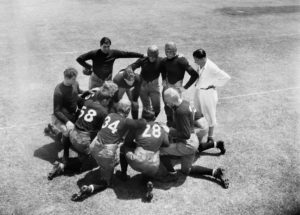
Here are some tips and suggestions on ways that you, the employer, can speed up the processing of your workers’ comp claims.
Pre-Accident Training
Every employee needs to know what to do in the case of a work comp injury. Your company needs to set the stage for your involvement in the work comp claim process from the very beginning.
Your new hire package must include instructions on the proper and timely reporting of the work comp injury. The accident reporting instructions must specify that the injury must be reported immediately, to whom the employee reports an injury, who are the approved medical treatment providers (in the jurisdictions where this is permitted) and information informing the employee of the return-to-work program your company uses.
Display, where all employees can see them, posters and/or billboards clearly showing these requirements, including the importance of immediately reporting the work comp injury. Be sure to post these materials in the employees’ prime languages in addition to English.
Click Link to Access Free PDF Download
“How Do I Get My Adjusters To Follow My Account Handling Instructions?”
Remind supervisors and managers on a regular basis that all work comp injuries are to be immediately reported to your work comp claims coordinator. The supervisors and managers should be familiar with the information required to complete the First Report of Injury form required in their state.
Prompt Reporting
When the work comp claims coordinator receives the information about the new work comp injury, the claims coordinator immediately reports it to the claims handling office. If, for any reason, the claims coordinator does not have all the information necessary, the claim is still reported to the claims office with a note indicating the rest of the information will be forthcoming as soon as it is available. This allows the work comp claims adjuster to get started on the claim.
Claim Service Standards
When your company starts an insurance program, the insurer or third-party administrator (TPA) should provide you with information on their claim-handling service standards. Those service standards usually specify within how many hours the adjuster will contact the employee once the claim is reported to the claims office. Excellent service standards specify the employee will be contacted within 2 (or 4) hours, while good service standards specify the employee will be contacted within 24 hours. If the service standards are silent on how fast the work comp adjuster will be in contact with the employee, ask them to make the 2-hour contact with the employee a claim-handling requirement on your files. If the insurer or TPA is reluctant to require prompt contact with the injured employee, it is time to get another insurer or TPA.
Employee Follow-up
When employees are injured, they are concerned about their future with your company, their future income and their ability to care for their families. When the employee’s supervisor or your company’s work comp claims coordinator contacts the employee shortly after the accident, the employee knows and feels s/he is valuable to the company.
When the employee initially reports the claim to the employer, the employee is instructed to keep the employer informed of medical treatment and medical progress. Emphasize the employee can expect to hear from the employer if the employee does not provide timely updates to your company.
Keeping in contact with injured employees lets the employees know the employer cares about them and their well-being. Employees who feel valued by their company are less likely to malinger off work when they could return to work, or hire an attorney.
For employees who are off work for an extended period of time, the claims coordinator should contact them at least monthly to inquire about their condition, treatment, and expected return-to-work date.
Medical Follow-Up
In the majority of states the employer is allowed to contact medical providers in regards to when the employee is medically able to return to work. Regular follow up with medical providers reinforces the importance of the employee returning to work.
Return to Work Program
Employees should know the expectation is they will return to work as soon as medically able. Often an employee is willing to return to work, but the treating physician is concerned that the employee may be re-injure by attempting to return to work before full recovery from the accident. Or, the employee is afraid to return to work because of concerns for his/her own safety. To protect themselves from malpractice claims, doctors often keep employees off work longer than is necessary.
The best way to alleviate both the fears of the employee and the fears of the doctor is to have a modified duty return-to-work program available to accommodate the employee. A modified program allows them to return to work before they are 100% recovered from their injury. The return-to-work program is structured to remove from the employee’s regular routine the activities the doctor feels could possibly cause the employee to be re-injures, whether it is a lifting restriction, standing restriction, bending restriction, etc.
The sooner the employee is back on the job, the sooner the employee fully recovers from the injury. A modified duty program provides the employee with physical reconditioning for the work they will be doing when the job restrictions are lifted by the treating physician.
The return-to-work program has a major impact on the amount of temporary total indemnity benefits are paid to the employee, reducing your overall work comp cost. Plus, when the treating physician states the employee has reached the maximum medical improvement, the employee who is back to work will normally receive a lower permanency rating then the employee who is still off work. The lower permanency rating also translates into lower work comp cost for your company.
Summary
Follow the proper steps throughout the work comp claim process from before the accident occurs to when the employee returns to work. The time saved translates into savings for the employer through lower workers’ compensation costs and improved productivity by the employee returning on the job sooner.

Contact: mstack@reduceyourworkerscomp.com.
Workers’ Comp Roundup Blog: http://blog.reduceyourworkerscomp.com/
Injury Management Results (IMR) Software: https://imrsoftware.com/
©2024 Amaxx LLC. All rights reserved under International Copyright Law.
Do not use this information without independent verification. All state laws vary. You should consult with your insurance broker, attorney, or qualified professional.
















